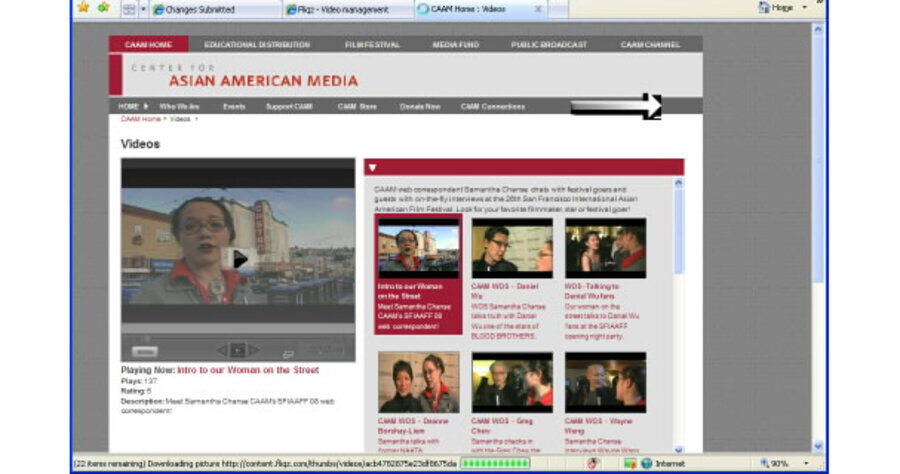YouTube offspring create niche sites
Loading...
| Los Angeles
User-generated video, or UGV, is a snappy term coined in the digisphere to denote home-grown footage of everything from little Joey’s first birthday to clandestine news footage of Tibetan monks in rebellion.
The river of UGV flowing across cyberspace has nearly doubled in size over the past year, topping 4 billion last month, according to Nielsen Online. More than 95 percent of this UGV online traffic runs through the behemoth website, YouTube. But, say media watchers and digital world doyens, as bandwidth has grown and become more widely available and costs to offer interactive video on a fledgling website have drastically dropped (from thousands of dollars to below $100 for a simple interface), the Internet is poised for a new explosion of user-generated video. In what some have begun to call “Web video 2.0,” this phase of online UGV will see the appearance of more niche websites with carefully targeted audiences and more sophisticated user tools.
“We are at the cusp of something interesting,” says Benjamin Wayne, CEO of Fliqz, a video technology provider. “In the first phase of Web video, sites pushed video out to users, but now we’re going to see interactive video becoming the norm on both big and small websites.”
In the shakeout during this first phase, consolidation of the financially strong has become the norm, says Jonathan Potter, executive director of the Digital Media Association. He points to the top-dog website YouTube, now backed by Google’s deep pockets. Many would-be competitors such as revver.com have stumbled for economic reasons, but, says Mr. Potter, “with the costs of creativity and production now so low, the innovation cycle and the entrepreneurial cycle never ends.”
Expect this innovation to produce a slew of sites with more carefully targeted demographics, adds Mr. Wayne, which will make it easier to attract advertisers. Small websites will not try to compete directly with powerhouses such as YouTube, Facebook, and MySpace, says branding expert, Joey Rahimi, managing director of Branding Brand Communications. Some will use the major platforms to create “buzz” for their sites, but, he adds, “You can make a good living targeting your niche audience.”
Zinch.com, for example, is a new website for high school seniors, on which the college-bound kids may post their particulars with their own video creations and school admissions teams can more carefully vet their applicants.
Military.com is a resource for service personnel to communicate with one another via personal videos. This allows state-side families to commune with overseas loved ones. In a recent ambitious move the site has partnered with PBS to create an ongoing discussion about military life pegged to the public broadcaster’s documentary about life aboard the USS Nimitz, a series called “Carrier.” The travel site, virtualtourist.com, is launching a new feature that will allow travelers to post their own videos from journeys around the world.
The cultural consequences of fully integrated, user-created video will be profound, some entrepreneurs suggest, as seen in two new websites launched on a trial basis this past week. QikLife.com, aspires to take UGV to a new level – real-time, personal streaming video, using proprietary software.
“We’re at a cultural moment,” says Tom Hayes, co-founder of qiklife.com. Global cellphone ownership is poised to nearly double to 5 billion by the end of the decade. “People will want fresh, live, immediate content,” says Mr. Hayes, and the portability of a cellphone will allow that. The site will “enable people to have their own live reality TV show.”
Over at allvoices.com, founder Amra Tareen says she wanted to use technology to “leverage a single voice.”
The site collects and features “citizen reporting” from around the world. Users can upload videos from any situation they may encounter, and the site will create an “event page” around the data. It will use proprietary software to search more than 4,000 other mainstream sources of information providing relevance and context. The site is completely created and fed by users, says Ms. Tareen, adding, “We want it to be the first true people’s media.”





